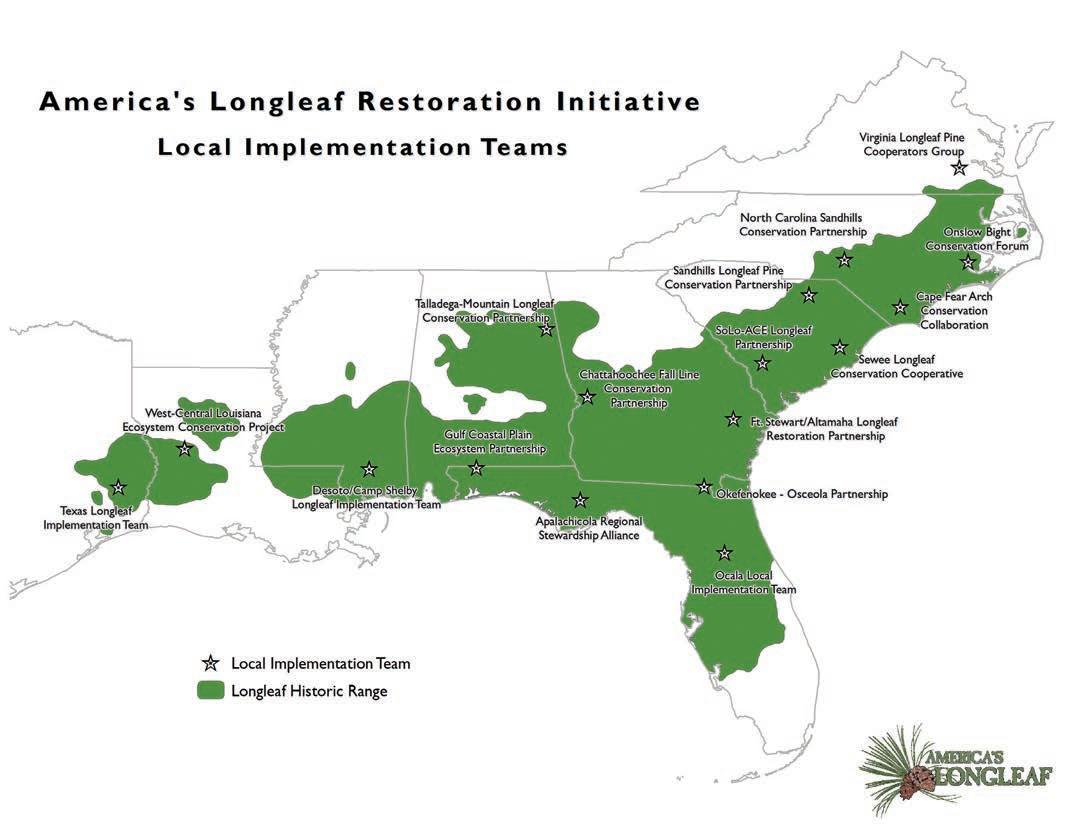
6 minute read
TECHNOLOGY CORNER
By Sarah Lauerman, AVES Consulting LLC
Tools of the Trade – Red-cockaded Woodpecker Translocations
Advertisement

Ladders are used to band RCW nestlings in the cavity nest (and also for cavity box installation). Photo by Lisa Lord.

A. B.
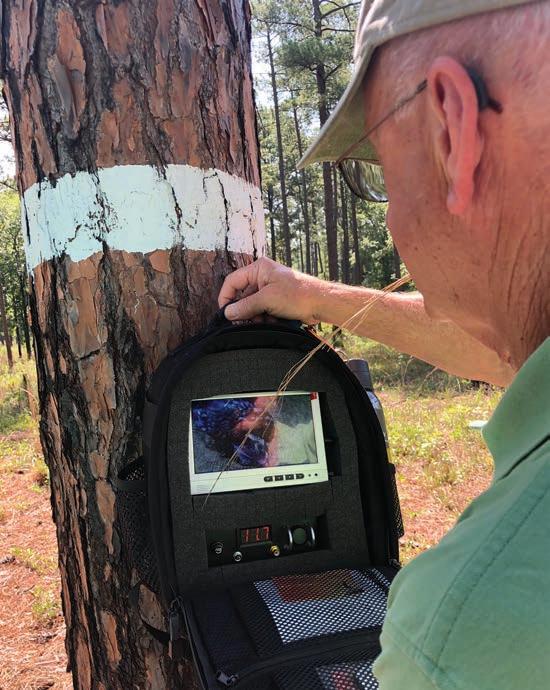
A. Monitoring an occupied cavity using a camera scope. Photo by Lisa Lord.
B. A banded red-cockaded woodpecker. Photo by Lisa Lord.
C. Volunteers and partners make translocations possible. Photo by Sarah Lauerman.
D. Temporary housing for RCW transport to their new home. Photo by Lisa Lord.

C. D.
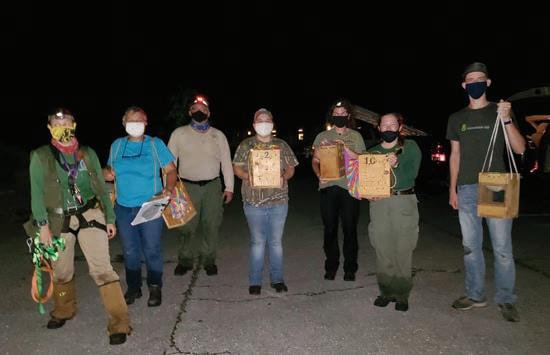
The stories of decline for the longleaf pine ecosystem and red-cockaded woodpeckers (RCWs) are connected, but so are their stories of conservation and recovery. RCWs are particularly fond of longleaf pines, and cavities persist for years, even decades, and 27 other vertebrate species have been documented using them, including many other cavity-nesting birds. As RCW populations rebound under active forest management and habitat enhancements, translocations provide only a fraction of mature longleaf pine habitat remains; an opportunities to augment smaller, isolated RCW populations estimated 16,000 birds are left where once there were likely and even reintroduce birds to sites where populations were millions. These birds are important to these pine communities extirpated. because they are a keystone species. Like the architectural keystone, which becomes the critical piece allowing an arch to Saving a Species, One Bird at a Time function, red-cockaded woodpeckers play a crucial role in their Each night, for the last thirteen years, my routine is the world. They are the primary excavators of cavities in live pine same; I stand quietly in a pine forest of fading light and listen trees, which they use for nesting and roosting. However, their for a sign. Through the buzzing of mosquitoes and calls of red-
TECHNOLOGY CORNER bellied woodpeckers, I hear what I am waiting for, and my heart races. I grip my spotting scope and keep alert for movement. It is my favorite part of each night; the birds I am waiting for have come home to roost, and they announce their entrance with a chorus of contact calls.
The birds, although somewhat unremarkable in appearance, are a federally endangered species. The small black and white woodpecker is not much bigger than my hand, but what it lacks in size, it makes up for in importance. It is the redcockaded woodpecker, and despite its name, red feathers are rarely seen. They get their name from the few, discreet, red feathers edging the black cap on the male’s head like the decorative ribbons, or cockade, on an eighteenth-century tricorne hat. However, this is not the eighteenth century, and much of the southern pine forests of the southeastern United States have been logged, thus putting this endemic species on the endangered species list. Although the evening is routine in every way, tonight is the final night of the season, and it is going to end differently. Usually, I watch the birds come in and fly to their cavities’ entrance, 20 to 40 feet up in old pine trees. The trees are wellmarked by the woodpeckers and easy to spot with the layers of old and new sap running down the trunks, making them look like melted candlesticks. A bird will sometimes stop at
Field Work Packing List

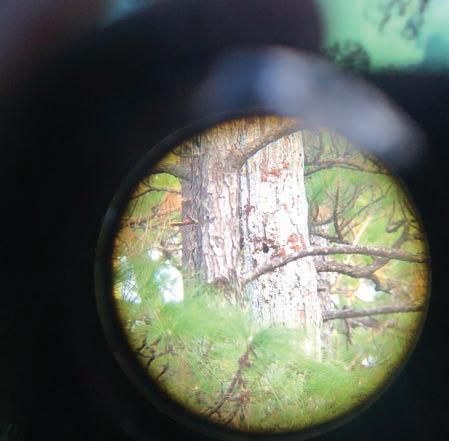
A.
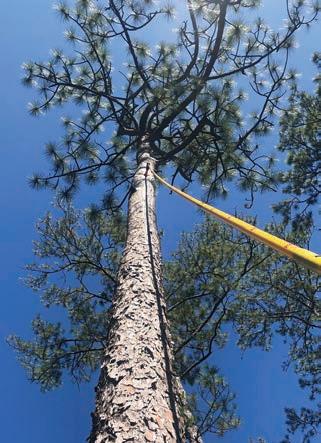
3 spotting scope 3 binoculars 3 cavity viewing (or “peeper”) camera 3 net on a telescoping pole 3 ladder 3 translocation transport boxes 3 headlamp 3 mosquito spray 3 crazy field crew
B. C.
RCW translocations are conducted by trained individuals with proper permitting.
A. and B. Spotting scopes in action. Photos by Sarah Lauerman and Lisa Lord. C. A telescoping pole with a net is used to capture RCWs identified for translocation. Photo by Lisa Lord.
TECHNOLOGY CORNER the cavity entrance, where it will roost for the night and peck away at the bark to encourage sap flow. his behavior proves to be a great defense against tree-climbing snakes. While they peck away, I use the spotting scope to view the bands on their legs. Each bird has a numbered metal band along with color bands making a unique combination and allowing me to identify the individual. Sometimes I am not so lucky, and the birds fly straight into the cavities without a single peck. However, tonight I am revisiting a site I have been to multiple times. I know which birds to expect and which tree they will disappear into, so the adrenaline I am feeling with their arrival is not needed yet. So, I wait. Once the birds have settled down for the night, I silently make my way to the tree of my target bird. I lift a long pole, with a net shaped like a closed windsock on the end, and advance towards the cavity. I pray the bird won’t fly out of the tree before I have the net in position. Tonight, I am in luck, and the bird stays quietly in the cavity.
Once the net is over the hole, I breathe a sigh of relief, and my muscle tension eases slightly. Now I just need to get the bird to come out into my net. I am not alone in the woods, and I give a shout to the volunteers who have been watching this capture process. Just a few moments ago, the forest was filled with only the natural noises of dusk as everything quieted down for the night, but now we break the calm air with our loud voices. One volunteer takes a stick and gives the tree a series of taps to encourage the bird to flush out of the cavity. The taps turn into scrapes as the volunteer starts to rub the stick against the bark; this sound does the trick. The bird flies out and into the net. It flutters down to the bottom of the sock, and we quickly lower the net. I gently extract it and see we have caught a young male who has recently molted his head feathers and sports his first red cockades. He will be paired with a female his same age, and several other pairs will join them on their journey to a new home, safely traveling in translocation boxes. Every year, for the past thirteen years, I monitor between 110 and 130 breeding red-cockaded woodpecker groups in the Osceola National Forest as part of a translocation program to speed up the recovery of the species. I spend summers carting ladders and climbing sappy pine trees to band week-old nestling red-cockaded woodpeckers and follow their progress as they fledge from the nest. Each fall, when the banded fledglings are 5 to 6 months old, a crew of wildlife biologists and I capture and translocate approximately 20 birds (in 10 pairs) from the Osceola National Forest to other properties in the southeast region where they will augment and stabilize these small recipient populations. From 2008 to 2020, we translocated 255 birds to 12 state and federal properties in Florida and Alabama. To learn more about the red-cockaded woodpecker, visit www.fws.gov/rcwrecovery.












